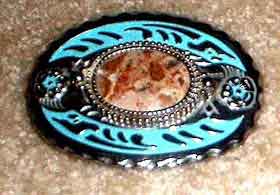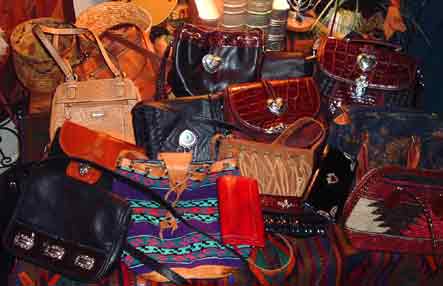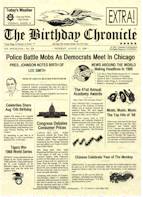|
HISTORY OF THE LIBERTY HILL SETTLEMENT (1853)


 

Welcome to Len kubiak's Texas History Series
HISTORY OF THE LIBERTY HILL SETTLEMENT (1853)
In the early 1850's, the area that was eventually named Liberty Hill, began to attract settlers from the Carolinas, and Tennessee areas. A poster advertising free land grants to settlers was widely circulated in South Carolina and other adjoining states in an attempt to get settlers into the territory claimed by the Comanche Indians.
Some of the early day families that were attracted to the offer of free land
included the Bacons, Barnes, Brysons,
Chamberlains, Carruthers, Dycus, Forbes, Grants, Hodges,
Jacksons, Logans, Matthews, Millers, Myracks, Pooles, Queens,
Rays, Russels, Snyders, and the Whites to mention a few.
John Thomas and Amelia Edwards Bryson came to the Liberty Hill region from Greenville, South Carolina by covered wagon. Their older children walked alongside the wagon most of the journey. John and Amelia had six children when they arrived including:
Mahilda Narcissa, born August 10, 1840 in Greenville, S.C.; died May 26, 1928
Joseph Goodson, born September 12, 1841 in Greenville, S.C.; died April 29, 1902
Thomas Noble, born July 5, 1843 in Greenville, S.C.; died February 20, 1920
Mary Naomi, born December 6, 1845; died May 4, 1928
Lenora Ann, born May, 1848; died January 1, 1930
John Henley, born May 25, 1850; died December 25, 1930
Rebecca Texanna, born in Liberty Hill on February 13, 1853; died September 26, 1853
Tandy Brittain, born October 8, 1858 in Liberty Hill; died December 30, 1937
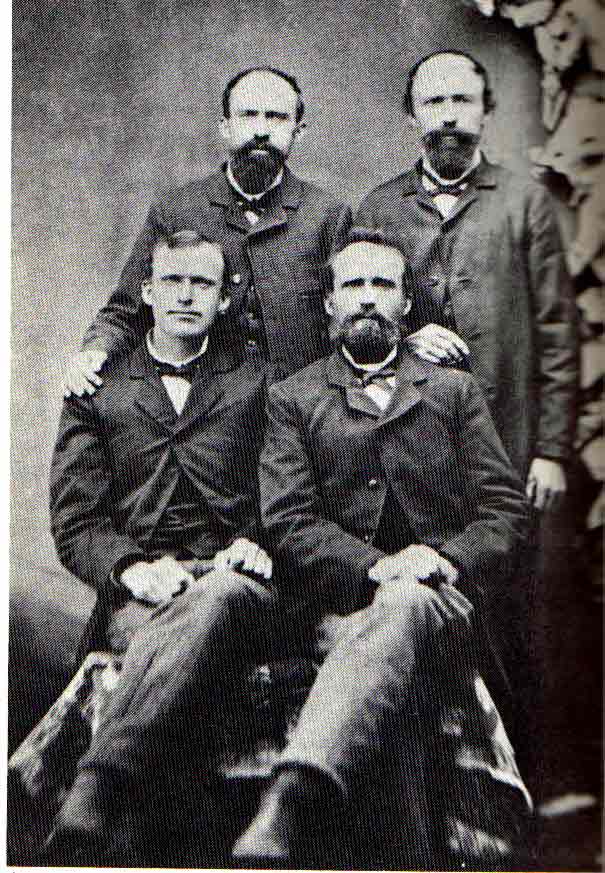
John and Amelia Bryson's sons, Joseph Goodson, Thomas Noble, John Henley and Tandy Brittain.
Soon after their arrival in old Liberty Hill, the Brysons,
with the help of their neighbors, constructed a log house
that was to serve as a combination church and school for the Liberty Hill
pioneer community.
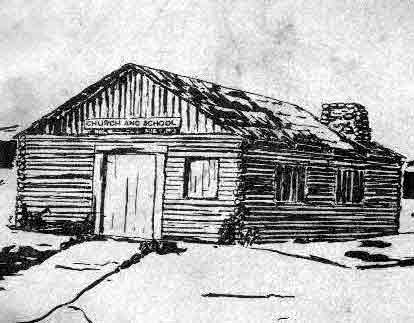
Liberty Hill's log cabin Methodist church and school (1853). Was located on the south side of the road across from the Bryson's home
As was the case with many early day
settlers, the Brysons were very much concerned about the
proper upbringing of their children from both an educational
and a spiritual viewpoint.
Charter members of the Liberty Hill Methodist Church included
John and Amelia Bryson, their oldest daughter, Mahulda, and
Mr. and Mrs. Anthony Smith.
The Bryson Home- Landmark of Old Liberty Hill

For the first few days in Old Liberty Hill, the Brysons
continued to camp out of their covered wagon. Meanwhile, with
the help of their two slaves, the Brysons completed a log
barn using native cedar timbers from the nearby cedar brakes.
Construction on their permanent home was begun in the summer
of 1851, and completed in the fall of 1852. The frame of the Texas classic dog-run home was constructed
of native red cedar timbers, notched and fitted without the
use of nails. The milled lumber used on the floors, walls and ceilings was hauled by oxen and wagons from the Williams Mill in the
Cedar Brake settlement near present-day Bastrop.
Each round trip took approximately one month to complete.
A limestone fireplace was installed at each end of the house
for heating the home in the winter time. A gallery spanned
the entire width of the house and a dogtrot extended through
the center of the home. The dogtrot created a funnel effect
drawing the cool breezes through the home. In the
summertime, the Brysons kept several beds in the open dogtrot
which was the coolest location in the house.
The Bryson Home, completed in 1852, served the village of Old Liberty Hill as a Stage Stop until the late 1880's.
The kitchen where the family cooking was done was a separate
structure from the main part of the house as added protection
against fires. A large fireplace at the east end of the
kitchen was used to cook the family meals. The kitchen
connected to the main structure through a covered walkway.
A few feet from the back of the house, the Bryson's constructed a cellar which was used as a haven from storms and possible Indian attacks (a major Comanche camp was located only a few miles west of the Bryson homestead. The cellar also provided cool storage canned food and potatoes.
Life in Early-Day Liberty Hill
John Bryson, his older sons and his two slaves spent much of
their waking hours raising food and livestock, growing cotton
to barter for "store bought" cloth and supplies, building
rock fences, digging wells, making soap and other related
tasks.
Amelia and her daughters did the cooking for the family using
the kitchen fireplace. They also washed clothes using
washpots to heat the water and scrubbing the clothes using rub boards or washboards. Amelia also made butter, quilted, mended
clothes, and saw to the spiritual and educational upbringing
of the children.

JOHN T. & AMELIA BRYSON FAMILY REUNION (1894).
JOHN AND AMELIA ARE SEATED OUT FRONT AND THEIR CHILDREN
(MAHILDA,JOSEPH GOODSON,THOMAS NOBLE,MARY NAOMI, LENORA ANN, JOHN HENLEY,
REBECCA TEXANNA (absent-deceased), AND TANDY BRITTAIN
SEATED IN AGE ORDER FROM LEFT TO RIGHT;
GRANDCHILDREN ARE SEATED BEHIND THEM.
The Establishment of the Bryson Stagecoach Stop
Ever so often, the military stage coach line from Austin would stop at the spring in front of the Bryson home to water their horses. As john and the stagecoach driver talked about the need for a stop in Liberty Hill, John Bryson accepted the challenge and a new stage coach stop was born.
To provide the extra water required by the stagecoach relay
teams, the Brysons, with the help of their slaves,
constructed two additional wells near their log barn.

STAGECOACH MAKING A STOP AT THE BRYSON STOP
IN THE 1850's. QUITE A CREW!
Other preparations included laying in extra food supplies and
making bedding arrangements for the passengers. Separate
sleeping quarters were provided for the men and women. The
men bedding down in the enclosed dogtrot area and the women's
sleeping quarters were provided in one of the large front
rooms. An extra wash stand was installed in the dogtrot for
use by the guests.
Each approach of the stagecoach was marked by the sounding of
a horn and the subsequent barking of the dogs and honking of
the geese.
The coming of the stagecoach was always an exciting event for
the Bryson family. The minute the stage pulled up to a halt
in the front yard, Goodson would help his dad to unharness
the team and feed, water and groom the weary horses who had
just completed a 10 mile run under a heavy load.
Meanwhile, Amelia would greet the passengers and driver with
a pitcher of cool water from the spring. For the price of
one dollar, each passenger would be furnished two meals and a
bed for the night.
Passengers who had previously traveled the western route
looked forward to their stop in Liberty Hill as Amelia had
established a reputation as a charming hostess and excellent
cook. Assisted by her older daughter, Mahulda, she would set
a dinner table with such delights as corn on the cob, fresh
vegetables (or canned vegetables out of season) served with churned butter and oven-hot bread,
fresh milk, smoked hams and sausages, fried chicken and
gravy, cornbread and a selection of pastries from the oven. How different this was from some of the other frontier stage
stops where a cold meal of aging vegetables and tough meat
was often the best that could be expected.
After supper, bed rolls were prepared for the passengers and
everyone retired to the front porch to exchange tales about
their travels and get caught up on the latest news from the
east. Often, one of the guests would perform feats of magic
or card tricks or some of the men would get a poker game
going.
At daybreak the next morning, the passengers would be
awakened by the aroma of sizzling sausage and bacon.
Breakfast included hot biscuits and churned butter, bacon and
sausage, hash brown potatoes, fresh spring chilled milk, hot
coffee and jellies and jams.
Soon it would be time to hitch up a fresh team of horses and
prepare for the day's long journey. After the last passenger
had boarded and the driver and shotgun rider were in place,
the stage would take off leaving behind a cloud of dust.
Things around the Bryson place would then return to normal
until it was time to prepare for the arrival of the next
stage.
Liberty Hill Becomes a Town
Liberty Hill was officially recognized as a settlement in
1853 with the Reverend W.O. Spencer as its first
postmaster.

Reverend W.O. Spencer helped get post office for Liberty Hill and became its first
postmaster in 1853.
Initially, Spencer selected the name "Liberty" after the
liberty loving folks that settled the area. However, Rusk
informed Spencer that Liberty already existed so the name was
changed to Liberty Hill.
A few short years after becoming a town under the state of Texas and the United States, the area inhabitants found themselves on the brink of war. Although Sam Houston strongly opposed it, Texas joined with the southern states that left the union to join the Confederate States of America.

There were two major battles fought in Texas and both were won by Texas. However, in the Liberty Hill area, most Confederate troops spend their time defending the settlers from Indian Attack, rather than actually skirmishing with the Yankees. However, several of the local boys volunteered to join up with solders of other southern states and served with distinction.
After the war was over and reconstruction completed, the settlers of Liberty Hill turned their attention to the great trail drives that were taking place along the Chisholm trail just a few miles east of Liberty Hill. Some of the Bryson clan saddled up, bought all available livestock in the area and headed north to Dodge City, Kansas.
As the area west of Liberty Hill continued to prosper and the Indian threat dimenished, Fort Croghan was closed. However, towns sprang up west of Liberty Hill along the Comanche Trail (renamed the Military trail and eventually Texas State Highway 29)and the stage coach traffic increased until replaced by passenger trains and the automobile.

 
SCHOOL AND TOUR GROUP LIVING HISTORY TOURS
On an appointment basis, we conduct living history tours for school children and other history-minded tour groups (we like to limit the size of each tour group to 30, or less). We can take you back into the 1800's with a log cabin filled with primitive tools, tour a dirt-floor museum barm filled with relics of a bygone era. We can also take you back thousands of years and chip and use flint tools, grind grain, make primitive weapons and talk about life in the region before the coming of the Europeans. We also have an abundant collection of native fossils dating back 90 to 120 million years ago when the area was a shallow sea home to mossasarus (swimming dinasaurs), giant sharks, ammonites, and other ancient critters.
BIRTHDAY AND REUNIONS
You might also keep Fort Tumbleweed in mind for that next birthday party or family reunion.
For more information on the history tours, see:
Information about Fort Tumbleweed History Tours
Also see our history links near the bottom of this webpage. I spend a great deal of time researching Texas history and adding topics of interest to our website for our internet viewers.
The site is constantly growing. Bookmark us and come back often (and tell your friends about us).
Thanks,
Len Kubiak

Also see our history links near the bottom of this webpage. I spend a great deal of time researching Texas
history and adding topics of interest to our website for our internet viewers.
The site is constantly
growing. Bookmark us and come back often (and tell your friends about us).
Thanks,
Len Kubiak

|

LEONARD KUBIAK's ONLINE TEXAS HISTORY WEBPAGES
For detailed histories of other Texas historic towns, SEE:
Fort Tumbleweed Main Page.
|

 For questions or comments, send me an Email at
lenkubiak.geo@yahoo.com

MORE PLACES TO GO
|




